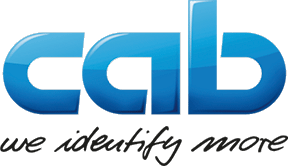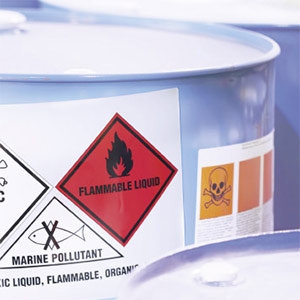Labeling hazardous goods according to GHS with cab label printers
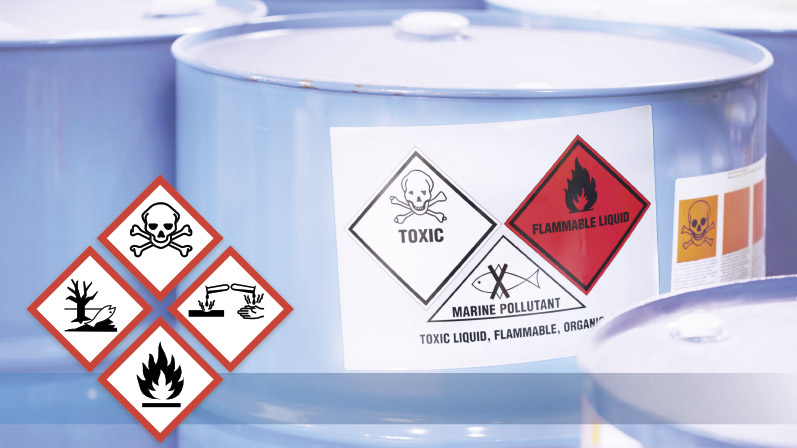
FDA, EEC, CLP, ADR, RID, DGR, RoHS, GbV* … such abbreviations sound like from a famous track by the German hip-hop band Die Fantastischen Vier, dated 1999. In fact, they indicate instructions in force, directed in particular to the chemical and pharmaceutical industries. Manufacture of such businesses includes liquid and powder mixtures, acids and alkalis, polymers and special plastics. These are accessed by consumers in small containers, bags or barrels. Many of such substances are potentially hazardous. Anyone who puts them into circulation must label them clearly.
* Regulations decrypted
FDA: U.S. Food and Drug Administration
EEC: European Economic Community
CLP: Classification of substances and mixtures within the EU
ADR, RID, DGR: Transport of dangerous goods by road, on rails or by air cargo
RoHS: Directive on the use of hazardous substances in electrical and electronic equipment
GbV: Call of a safety adviser on duty of hazardous goods
GHS symbols
When it comes to labeling hazardous substances, the Globally Harmonized System (GHS) provides uniform guidelines. These include, for example, label sizes and warning symbols. The symbols are black pictograms on a white background, framed by a red rhombus.
cab label printers for two-color printing
cab printers of the XC series were the first to enable printing two colors on a label in one operation. Such printers provide an additional print head to print the spot color. In the matter of labeling hazardous goods, as a result, companies must no longer provide pre-printed labelOn this topic:s on stock in large quantities. If only parts of a label need to be printed, the print head is lifted during label feed and the thermal transfer ribbon is stopped, resulting in less material consumption.
If labels have to be applied automatically to containers subsequent to two-color printing, the Hermes C printing system is first choice. Thanks to its modular design, it can be integrated to a plant wherever required. The print unit is extended by an applicator to transfer the printed labels. Labels can either be pressed or rolled onto surfaces. At this, the product may be in motion on a conveyor belt or at rest. In cases of a product or an operation changing, the applicator can be replaced.
On this topic:
Two-color printing with maximum print widths 4“ or 6“
Hermes C two-color print and apply system
Hermes C sample case TFL France
Label quality
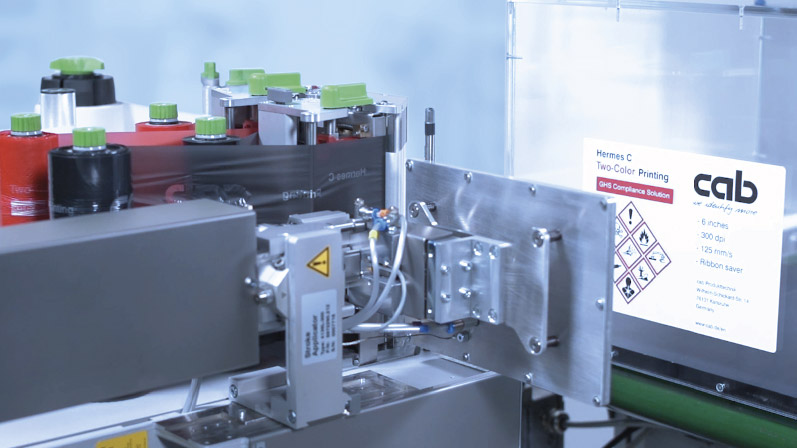
To identify hazardous substances, labels must provide the highest level of security and durability. Depending from an operating process and the manners goods are stored and transported, resiliencies to heat, cold, humidity, acids, fats and/or friction are required. The print must not smear even under highest stress. On containers, labels have to stick securely according to BS5609/3 standard even in rough conditions or in sea water. cab recommends labels made of polypropylene with GHS operations indoor or outdoor. Suitable thermal transfer ribbons in black and red are of resin quality.
On this topic:
Video on labels and ribbons – what has to be considered?
Booklets
If informing on the use of pharmaceuticals and pesticides, sanitary products and cosmetics, paints and varnishes, booklets have proven their value. Access to information is particularly easy if a booklet has been fixed to the outside of a container or its package. A protective film simplifies opening and resealing.
Flat printed booklet labels can be applied to a container, for example on its top or on a side, using a cab applicator. For perfect detection in material webs in motion, cab has developed the CEON sensor. It detects elevations or depressions of just 1/100 mm and thus enables highly accurate application. When operated on a cab IXOR labeling head, CEON is assembled as close as possible to its peel-off plate. There is low material stretching and the information carrier applied can be detected reliably.
Secure data in label printing
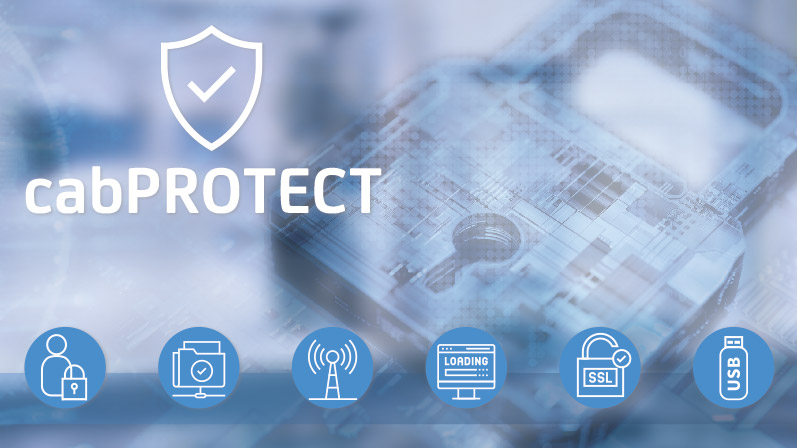
No later than integrating components to a network, when administration and authentication are required, the protection of personal data becomes a key issue. cab label printing systems provide all common protocols to protect data in a network.
On this topic:
cabPROTECT: Data security in label printing
April 2021
